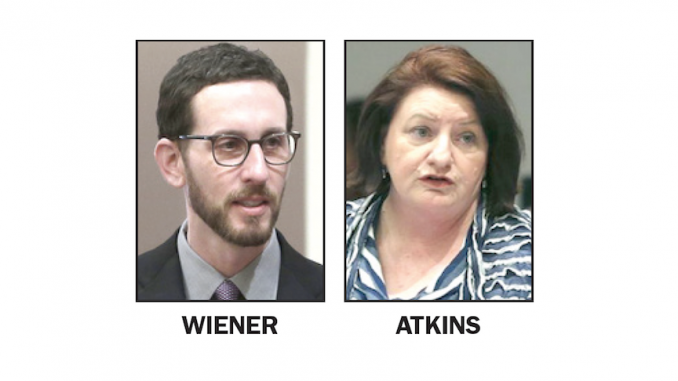
BY ELAINE GOODMAN
Daily Post Correspondent
A bill that would allow four housing units in many places where one single-family home now sits is moving forward in the state Legislature, with amendments aimed at addressing opponents’ concerns.
Senate Bill 9, by Sen. Toni Atkins, D-San Diego, was passed by the Senate Governance and Finance Committee on April 22 on a 5-0 vote.
The committee on April 22 also passed another housing bill, SB10 by Sen. Scott Wiener, D-San Francisco. SB10 would allow a local government to zone any parcel for up to 10 units of housing without needing an environmental review if the parcel is in what’s considered a transit-rich area, a jobs-rich area or an urban infill site. Adopting such zoning would be a voluntary move for cities.
The bill would give city councils the authority to override voter-approved land use initiatives in zoning parcels for 10 units. The committee’s vote on SB10 was 4-1, with Sen. Robert Hertzberg, D-Van Nuys, opposed.
Both bills are now headed to the Senate Appropriations Committee.
SB9 would allow the owner of a single-family home to build a second home or a duplex on their lot with only ministerial approval from the city. Ministerial approval, also known as “by right” approval, means that the city must approve the proposal if it meets a set of fixed standards.
SB9 would also allow, with ministerial approval, a single-family lot to be split into two lots of roughly the same size.
After SB9 was introduced in December, questions arose over how many units the bill would allow on a lot when taking into account state law on granny units, also known as accessory dwelling units or ADUs.
Current law allows three units on a single-family lot: the main home, a granny unit and a junior ADU. Junior ADUs are units of up to 500 square feet connected to the main home. Some people theorized that SB9 would allow a total of six or even eight units on a lot when combined with ADU laws.
SB9 has been amended to say the bill wouldn’t require a city to permit more than two units on a parcel. And “units” are defined as the main home, granny units or junior ADUs.
“Two lots, with two homes each — that’s it,” Eric Phillips with the California chapter of the American Planning Association said in explaining the bill to the committee. “ADU laws already allow up to three units per lot. So this is only an incremental change in intensity.”
Phillips noted that the lot-split provision of SB9 would allow new homes to be sold, creating home ownership opportunities that otherwise might not exist.
Proponents say SB9 contains a number of additional safeguards. The bill wouldn’t apply to lots in historic districts or in flood or earthquake hazard zones, Sen. Mike McGuire, D-Healdsburg, told the committee.
SB9 would prevent individuals from receiving ministerial lot splits on neighboring parcels as a way to prevent investor speculation, McGuire said. The amended bill would allow a city to require the property owner to live in one of the units.
And SB9 includes tenant protections. “It prevents profiteers from evicting or displacing tenants by excluding properties where a tenant has resided in the past three years,” McGuire said.
Dozens of people called in to the hearing to register their opposition to SB9 and SB10. And in Los Altos Hills, more than 600 people signed an online petition opposing both bills.
The petition, written by Hills 2000-Friends of the Hills, said the bills would increase noise, parked cars, and traffic in neighborhoods, while reducing backyard privacy. The bills would strain schools and utility systems and increase fire danger, the groups said.
“These bills would be a boon to developers without providing affordable housing,” the petition said.
The group said better alternatives would be to give ADU laws time to work in producing more housing, convert commercial buildings such as vacant big-box stores to housing, or concentrate development near transit hubs.
Los Altos Hills residents “have paid premium prices to enjoy the benefits that the one-acre minimum requirement here has to offer,” commented one person who signed the petition, identified as Jay S. “These two propositions are akin to ‘bait and switch,’ and it is benefiting a few builders that selfishly want to profit, but at our expense.”




No on SB 9 and 10. There is so much density being built already and to allow this in already developed single family residences would be a shame. The problem is not lack of housing it is the cost of the housing. These new high density builds are NOT affordable. It is cheaper to rent an existing home than the high rise units being built now. These new units are using the decor of HGTV to attract people and are not affordable. I have seen after 6 months, family want out. so many stairs, not enough parking and it seems the developers are the winners. the single family with an average lot (600sq ft) in most cities is not being built and that is what people want. In many cases they are cheaper to rent than the new stack and pack units. Do not care what politicians are saying. Politicians are in la la land. 42 years in the rental management business, I believe I know what people want. Again, these new units are NOT affordable and that is the issue. Traffic, schools and more would be impacted. Are we trying to create a Marxist society? Yes, I believing in helping disadvantaged but not at the expense taking away what many middle class people have spent their life building. I can not afford to live in the place I grew up. This is a fact of life.
SB9 and SB10 are a direct attack on wildlife. Splitting lots in rural and semi-rural areas kills wildlife by taking away habitat. Limit density to big cities where wildlife habitat is already gone.